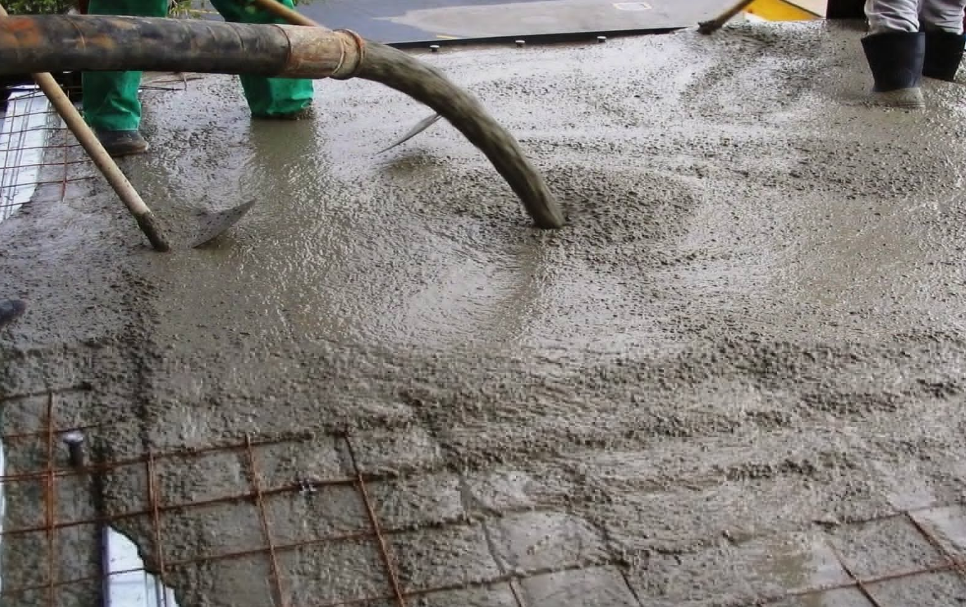Concrete is a fundamental material in construction, widely used for its strength and durability. However, the process of curing concrete, known as curar concreto in Spanish, comes with its own set of risks and dangers. This comprehensive guide will explore the various hazards associated with concrete curing, providing essential information for construction workers, managers, and safety professionals.
Introduction to Concrete Curing Risks
Concrete curing is a critical process that involves maintaining adequate moisture, temperature, and time conditions to allow cement hydration reactions to progress, resulting in the development of desired properties. While essential for achieving optimal concrete strength and durability, this process can pose significant risks to workers and the environment if not managed properly.
Curar concreto refers to the process of curing concrete, which is crucial for ensuring its long-term performance. However, this process comes with inherent risks, or riesgos, that must be understood and mitigated to ensure worker safety and project success.
The dangers associated with concrete curing can be broadly categorized into physical hazards, chemical risks, and environmental concerns. These peligros range from immediate threats to worker health and safety to long-term structural issues that can compromise the integrity of the finished product.
2. Physical Hazards During the Curing Process
One of the primary physical risks in concrete work is the handling of heavy materials. Concrete mixtures, forms, and equipment can weigh hundreds of pounds, putting workers at risk of musculoskeletal injuries.
Strain and Sprain Injuries: Lifting and moving heavy concrete components can lead to strains and sprains, particularly in the back, shoulders, and knees. These injuries can result in long-term health issues and reduced work capacity.
Crushing Hazards: There‘s always a risk of materials falling or shifting during the curing process, potentially crushing workers’ limbs or causing more severe injuries.To mitigate these risks, proper lifting techniques and mechanical aids should be employed. The use of equipos de elevación (lifting equipment) can significantly reduce the risk of injury.
Slip and Fall Risks
Concrete work often involves wet, slippery surfaces, increasing the risk of slips and falls. This is particularly dangerous during the curing process when surfaces may appear dry but remain slick.
Uneven Surfaces: Partially cured concrete can create uneven surfaces, increasing the risk of tripping and falling.
Wet Conditions: The water used in the curing process can create puddles and wet areas, making surfaces extremely slippery.
To address these risks, proper footwear with non-slip soles is essential. Additionally, maintaining clean and organized work areas can significantly reduce the likelihood of accidents.
3. Chemical Hazards Associated with Concrete Curing
One of the most significant chemical hazards in concrete curing is the risk of cement burns. Fresh concrete mixture is highly alkaline, with a pH level that can reach 12 or higher. This alkalinity can cause severe chemical burns if it comes into contact with skin or eyes.
Quemaduras por cemento (cement burns) can occur quickly and may not be immediately noticeable. The alkaline nature of cement can continue to cause damage even after initial contact, making prompt treatment crucial.
Types of Cement Burns:
- First-degree burns: Redness and mild pain
- Second-degree burns: Blistering and severe pain
- Third-degree burns: Deep tissue damage, potentially requiring skin grafts
To prevent cement burns, workers should wear appropriate personal protective equipment (PPE), including waterproof gloves, long-sleeved shirts, and full-length pants. If skin contact occurs, the affected area should be washed immediately with cool, clean water for at least 20 minutes.
Respiratory Problems from Dust Inhalation
During the concrete mixing and curing process, fine particles of cement and other additives can become airborne, creating a respiratory hazard. Problemas respiratorios (respiratory problems) associated with concrete dust inhalation can range from short-term irritation to long-term health issues:
- Silicosis: A lung disease caused by inhaling silica dust, which is present in many concrete mixtures
- Chronic Obstructive Pulmonary Disease (COPD): Long-term exposure to concrete dust can contribute to the development of COPD
- Occupational Asthma: Regular exposure to concrete dust can trigger or exacerbate asthma symptoms
To mitigate these risks, proper ventilation and dust control measures should be implemented. Workers should wear appropriate respiratory protection, such as N95 masks or respirators, when working in dusty conditions.
4. Eye and Skin Dangers
The alkaline nature of cement makes eye protection crucial during concrete work. Even small amounts of cement dust or splashes of wet concrete can cause severe eye injuries.
Lesiones oculares (eye injuries) from concrete exposure can include:
- Corneal abrasions
- Chemical burns to the eye
- In severe cases, permanent vision loss or blindness
To protect against eye injuries, workers should wear safety goggles or face shields that provide full coverage. In case of eye contact with cement or concrete, the eyes should be flushed immediately with clean water for at least 15 minutes, and medical attention should be sought promptly.
Dermatitis and Other Skin Conditions
Prolonged or repeated skin contact with wet concrete can lead to various skin conditions, with dermatitis being one of the most common. Dermatitis por contacto con cemento (cement contact dermatitis) can manifest in two forms:
- Irritant Contact Dermatitis: Caused by the alkaline and abrasive nature of cement, leading to red, itchy, and inflamed skin
- Allergic Contact Dermatitis: An allergic reaction to chromium compounds present in cement, resulting in similar symptoms but potentially more severe and long-lasting
Other skin conditions that can result from concrete exposure include:
- Skin thickening
- Ulceration
- In rare cases, skin cancer with long-term, repeated exposure
Prevention is key in avoiding these skin conditions. Workers should wear alkaline-resistant gloves, boots, and clothing that covers all exposed skin. Regular skin checks and prompt cleaning of any concrete-exposed skin are also essential.
5. Consequences of Improper Curing
Proper curing is crucial for the long-term strength and durability of concrete structures. Improper curing can lead to various issues that compromise the integrity of the concrete.
Grietas en el concreto (cracks in concrete) can occur due to several factors related to improper curing:
- Rapid moisture loss leading to shrinkage cracks
- Thermal cracking due to temperature differentials
- Plastic shrinkage cracks forming before the concrete has fully set
These cracks not only affect the appearance of the concrete but can also lead to more serious structural issues over time.
Reduced Concrete Strength
One of the primary goals of proper curing is to ensure that concrete reaches its intended strength. Inadequate curing can significantly reduce the compressive strength of concrete, compromising its ability to withstand loads and environmental stresses.Factors that can lead to reduced strength include:
- Insufficient moisture during the curing process
- Extreme temperatures during curing
- Premature loading of the concrete structure
To ensure optimal strength development, concrete should be cured for an appropriate duration under controlled conditions. This typically involves maintaining a moist environment and protecting the concrete from extreme temperatures for at least seven days after placement.
6. Safety Measures and Prevention
The use of appropriate personal protective equipment (PPE) is crucial in mitigating the risks associated with concrete curing.Equipo de protección personal (personal protective equipment) for concrete work should include:
- Safety Goggles or Face Shield: To protect eyes from splashes and dust
- Alkaline-Resistant Gloves: To prevent skin contact with wet concrete
- Waterproof Boots: To keep feet dry and protected
- Long-Sleeved Shirts and Full-Length Pants: To minimize skin exposure
- Respiratory Protection: Such as N95 masks or respirators for dusty conditions
- Hard Hat: To protect against falling objects and other head injuries
It’s important to note that PPE should be properly fitted, maintained, and replaced as needed to ensure its effectiveness.
Safe Work Practices
Implementing safe work practices is essential for preventing accidents and injuries during concrete curing.Key practices include:
- Proper Training: Ensure all workers are trained in safe concrete handling and curing techniques
- Regular Equipment Maintenance: Keep all tools and equipment in good working condition
- Adequate Ventilation: Ensure proper air circulation in enclosed spaces
- Hygiene Practices: Provide facilities for workers to wash hands and change out of contaminated clothing
- Emergency Procedures: Have clear protocols for handling accidents and injuries
- Job Rotation: Minimize prolonged exposure to hazards by rotating tasks among workers
Additionally, implementing a comprehensive safety management system can help identify and address potential hazards before they lead to accidents or injuries.
7. Conclusion and Final Recommendations
Understanding the riesgos y peligros por curar concreto is crucial for ensuring worker safety and project success in the construction industry. By recognizing the physical, chemical, and long-term risks associated with concrete curing, employers and workers can take proactive steps to mitigate these hazards.Key takeaways include:
- Always use appropriate personal protective equipment
- Implement and follow safe work practices
- Ensure proper training for all workers involved in concrete work
- Maintain good hygiene practices to minimize skin contact with concrete
- Follow proper curing techniques to ensure concrete quality and structural integrity
By prioritizing safety and adhering to best practices, the risks associated with concrete curing can be significantly reduced, leading to safer work environments and higher-quality construction outcomes.Remember, la seguridad es primero (safety comes first) in all aspects of concrete work. Continuous education, vigilance, and commitment to safety protocols are essential for protecting workers and ensuring the longevity of concrete structures.














